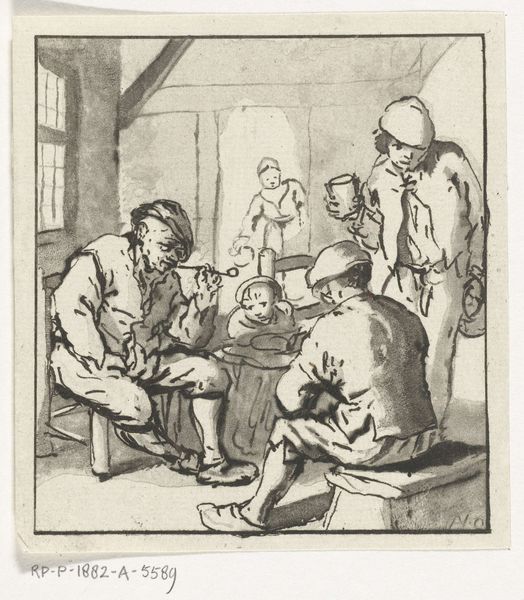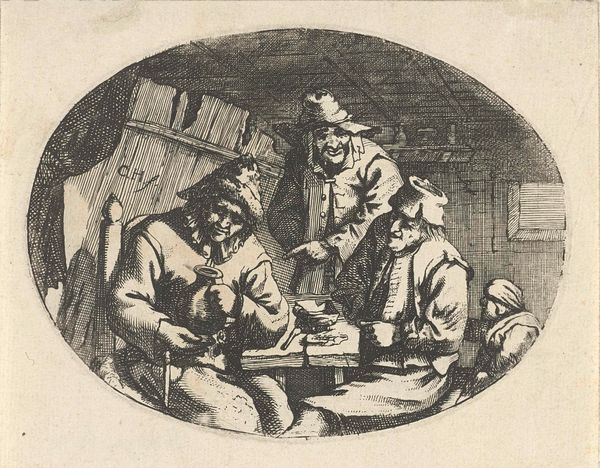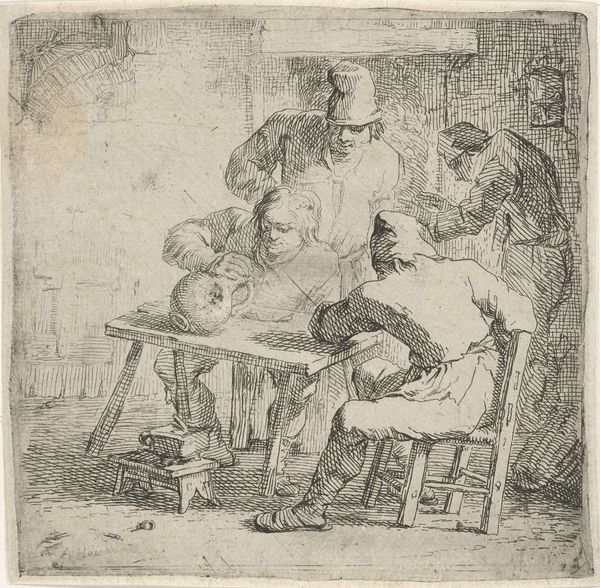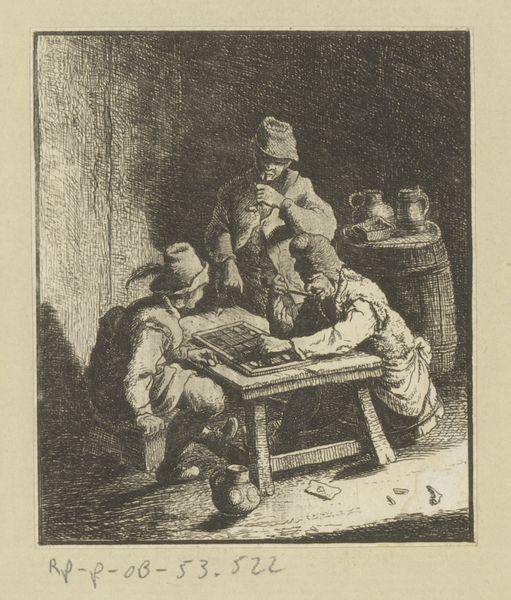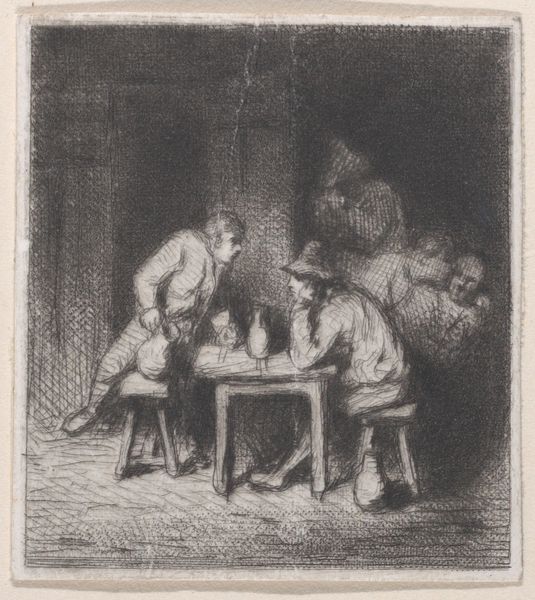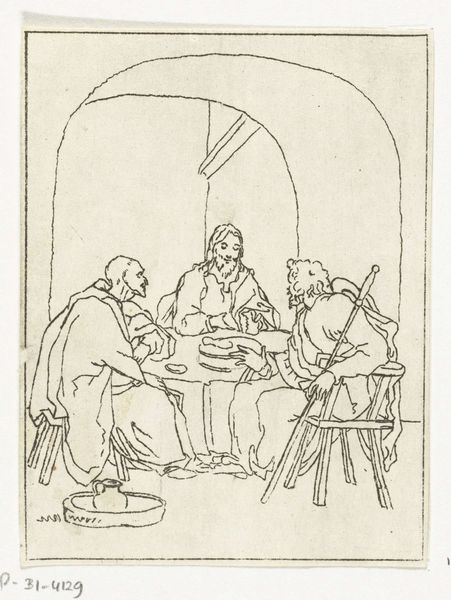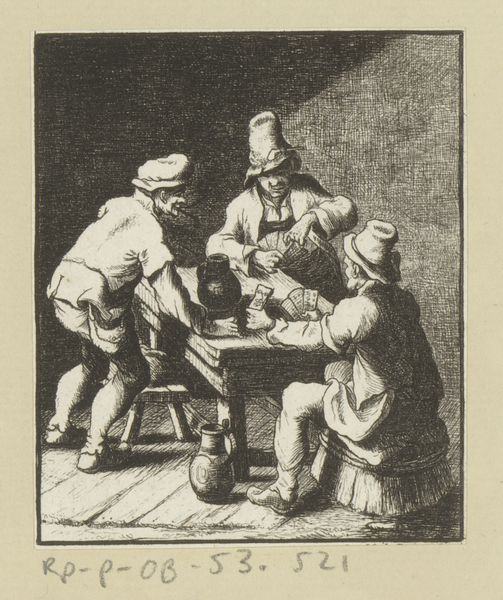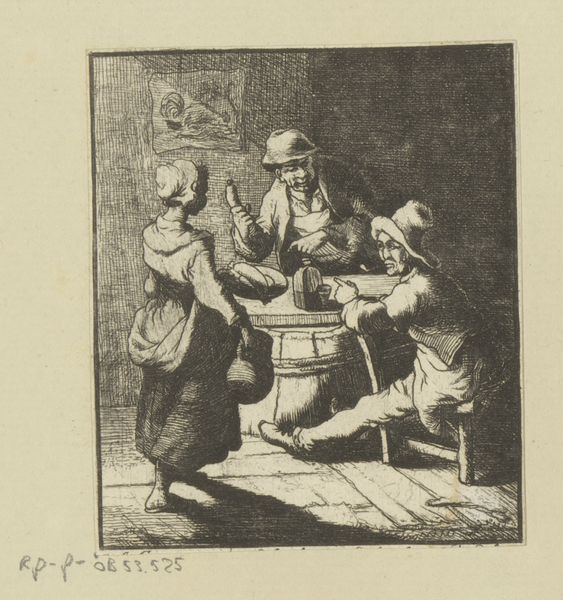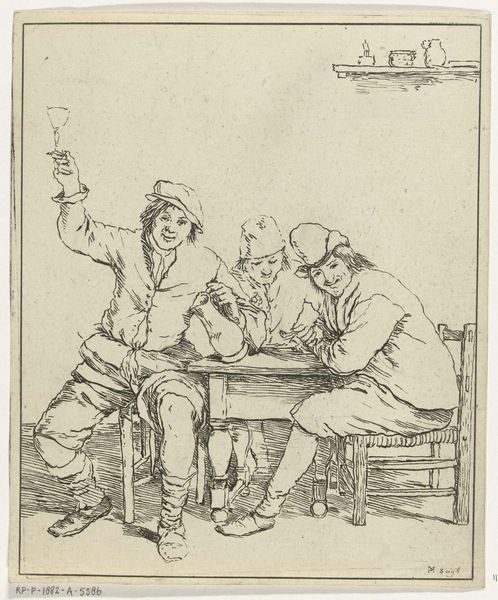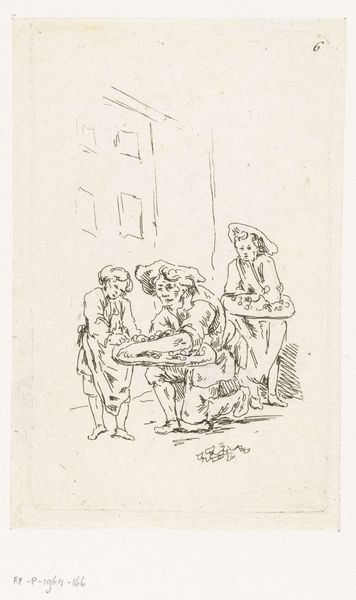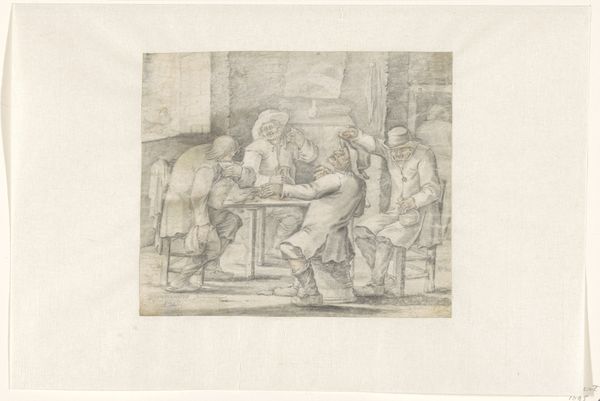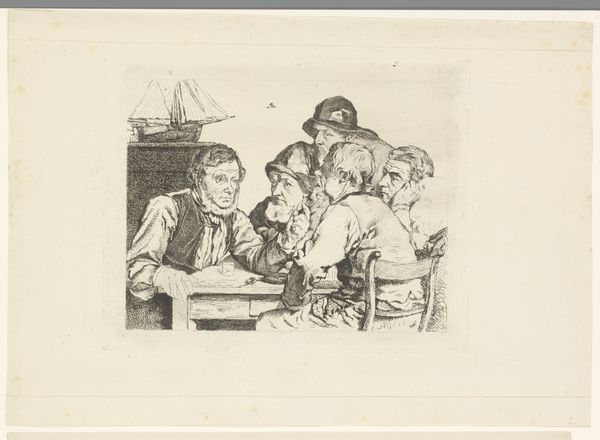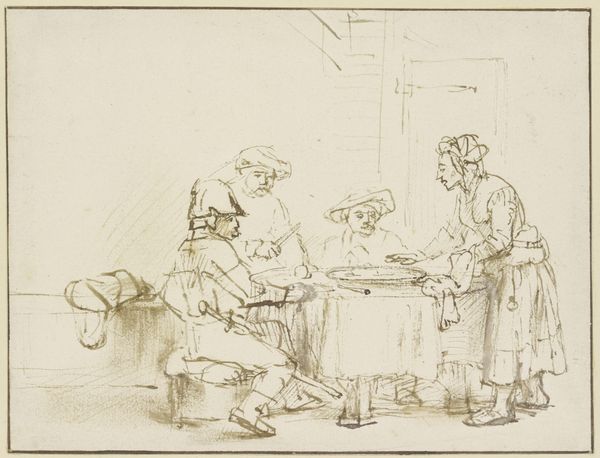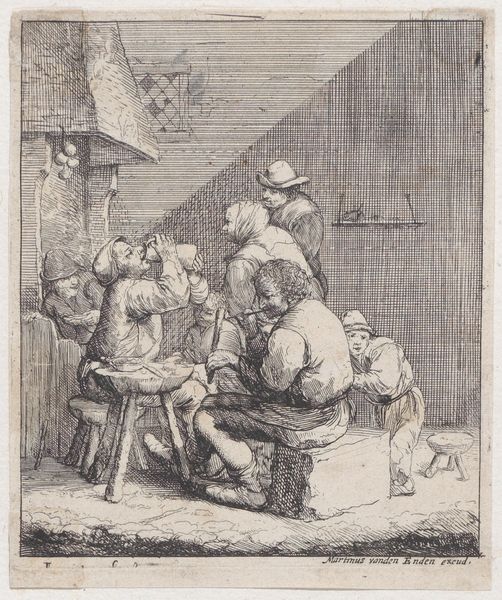
drawing, ink, pen
#
drawing
#
baroque
#
ink
#
pen
#
genre-painting
#
realism
Dimensions: height 124 mm, width 104 mm
Copyright: Rijks Museum: Open Domain
Curator: This is "Interior with Peasant Family," a drawing by Leendert Brasser, created sometime between 1727 and 1793. It's rendered in pen and ink. What are your initial thoughts? Editor: It feels intimate, doesn't it? Despite the rough strokes, there’s a real sense of a moment captured. You can almost hear the low murmur of conversation in this modest home. Curator: Precisely. Brasser was interested in portraying everyday life. It reflects the period's evolving views on social classes and the value of the working class within society. This domestic setting and attention to their humble life offered a glimpse into a world largely ignored by more formal portraiture of the era. Editor: There's a fascinating tension, though. While the composition centres the family and gives a view on a shared moment, the rendering of their clothing and rough environment raises questions. What message might Brasser be conveying about their social position and identity, not simply through portraying it, but framing the visual interpretation itself? Curator: The visual is paramount here! It offers an understanding of the visual language prevalent at that time. The rapid lines and stark contrasts could suggest both a respect for the figures, and a recognition of their labor. By stripping down detail, he emphasises the basics, offering a universal quality of a family coming together, that cuts across socioeconomic factors. It speaks to essential needs and commonalities, though, you are right, rendered in their specific lived situation. Editor: I think Brasser pushes us to think about labor conditions but perhaps, simultaneously, to question any romanticized views that elide the realities of their struggles. Art during the Enlightenment served many functions, and documenting while implicitly critiquing fits. The image has an almost stark quality and direct engagement to these individuals within a very confined sphere. Curator: And he achieves this despite it just being a sketch, a quick study using only pen and ink! The efficiency allows him to communicate the scene, whilst retaining nuance for future study of that culture, family dynamic or domestic architecture of the time. Editor: Ultimately, the drawing functions as a potent record. Curator: It does that, whilst it offers endless material to deconstruct popular ideologies of the 1700s, as well as opening pathways for discourse of present conditions too!
Comments
No comments
Be the first to comment and join the conversation on the ultimate creative platform.
